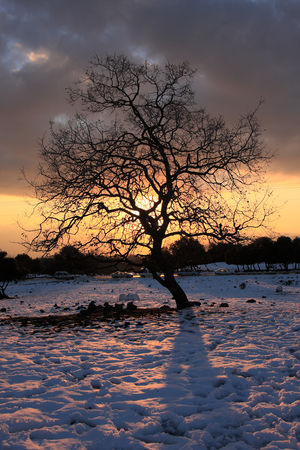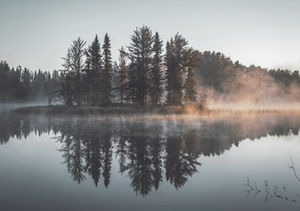
Litha or Alban Heruin, the Summer Solstice that falls on June 21st or 22nd, marks the shortest night of the year. The time when the year turns from light to darkness. Even though we are in the midst of light, and many weeks of summer remain, it is on this night that the year turns. From this night forward the nights grow longer and the days shorter. We receive inspiration at Alban Arthuan, the Winter Solstice, and wisdom at Alban Eiler, the Spring Equinox. Alban Heruin represents the period in our lives when we begin to express the gifts we have received. It represents youth passing into adulthood. Light of the Shore is the meaning of Alban Heruin. It is the time of year when we stand between the worlds of darkness and light, just as the shore stands between the worlds of water and earth, just as one coming of age stands between the worlds of reception and action. This is the night we honor the vigor and youth of the God of Nature. For in this season the full flowering of the Earth is upon us. Once, long ago, we would have gathered in meadow and forest to feast and dance, to play games and assume the masks of Gods and Goddesses.
Alban Heruin is the time of the Hunter, the season of the Great Hunt. What is it we hunt? We seek to rediscover our connection with both the Great Hunter and with the Hunted. We pursue a true understanding of who we are. Our quest is to find the Wildman and Wildwoman that dwell within our very cells and to discover the paths in the Wildwood that will lead us back to at-one-ment with our even wilder cousins: the bear and the boar, the lion and panther, the stag and the hind. We would remember to our bones when we hunted afoot with our horns and our hounds in the morning.
At the Summer Solstice, the year turns, the nights grow longer, the Little Sun rules. Considering that Alban Heruin means Light of the Shore, it is interesting that Pwyll and Havgán meet at a ford, a place that connects two shores. Fords were essentially magical places. All between places are gateways into Otherworlds, into other realities. Two elements, Earth and Water, meet at the ford and two shores are joined there. Many tales regarding fords survived the dark days between the Roman conquest and the present. From the evidence of Shakespeare’s, Midsummer Night’s Dream, it is clear that as late as the 16th century there was a belief that faerys were active on Midsummer’s Eve. Perhaps it is in no way significant, but it is an odd coincidence that St. John the Baptist’s Day is June 24th and, like the Green Knight, St. John lost his head. Most of the surviving pagan traditions related to Alban Heruin have become attached to St. John’s Eve. An example of how an ancient custom may become distorted practically beyond recognition concerns digging ‘coals’ on Midsummer’s Eve.
As with the other Portals of the Seasons, the fire was treated with special respect during Alban Heruin. It is still unlucky, in some quarters, to allow the fire to go out on Midsummer’s Day or to let anyone take fire from one’s home. It was custom to fast all day on Midsummer’s Eve and at midnight to lay out a supper, a meal for the faeries and ancestors, consisting of bread, cheese, and ale. Later this custom was corrupted into a form of love divination in which the maiden would watch to see an apparition of her future husband come to eat the food. In the first decades of the 20th century, there were still reports of the Goddess Aine appearing to folk celebrating the eve of summer near Her sacred hill. If She is no more seen, perhaps it is because we no longer look.





